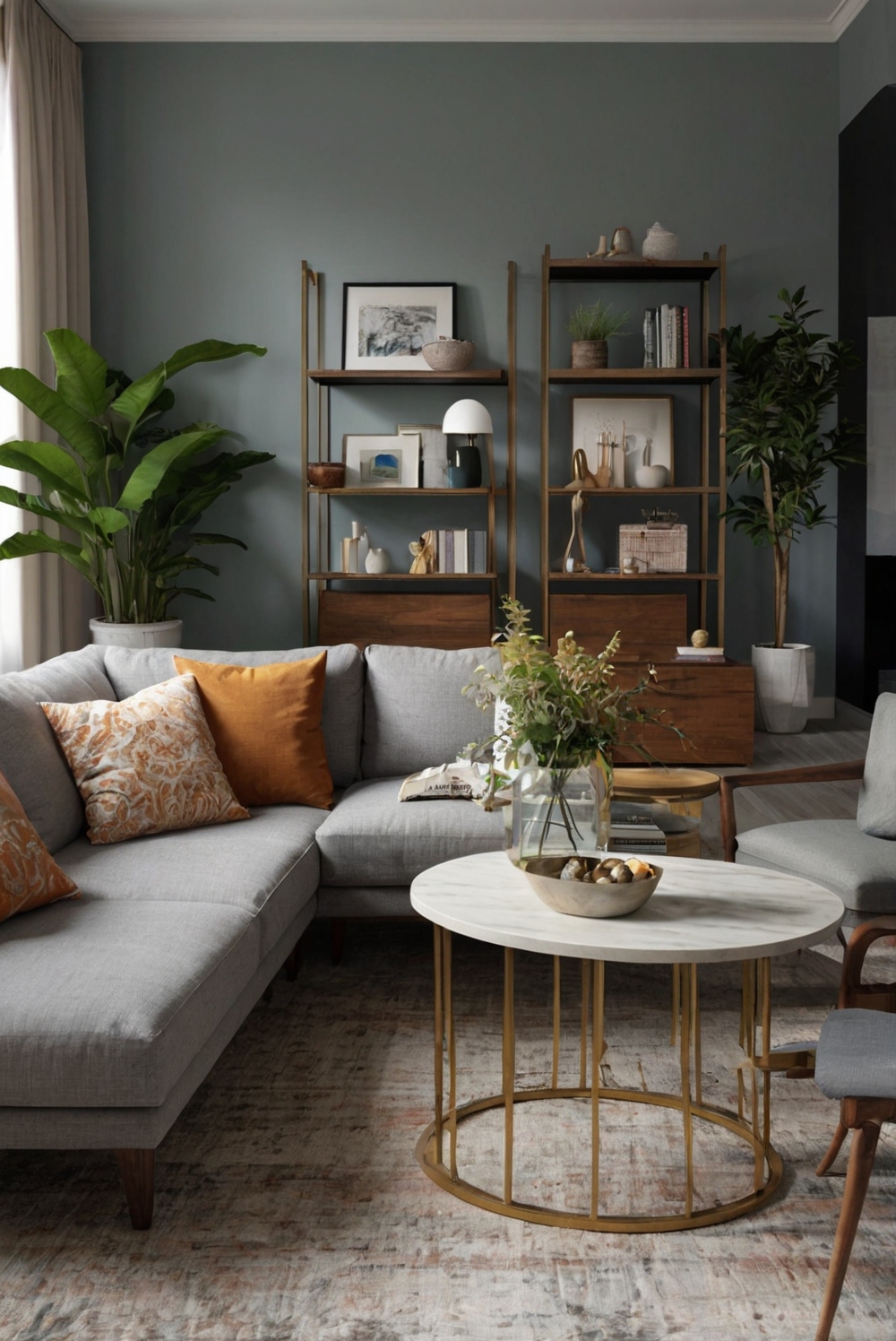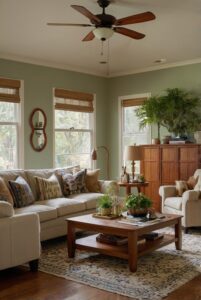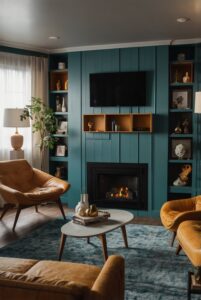Discover expert tips on arranging furniture to maximize space in your living room. Learn how to create a versatile and stylish multifunctional area with simple decor adjustments.
In order to create a multifunctional space in the living room, you can arrange furniture strategically. Start by choosing versatile pieces like storage ottomans or nesting tables that can serve multiple purposes. Consider using modular furniture that can be easily reconfigured to adapt to different activities. Use area rugs or room dividers to visually separate different zones within the room. Ensure good lighting options such as floor lamps or adjustable wall sconces to cater to various tasks. Incorporate smart storage solutions to keep clutter at bay and maintain a streamlined look. By following these steps, you can optimize your living room for different functions while maintaining a stylish and organized space.
Arrange furniture to create a multifunctional space in the living room
In order to create a multifunctional space in your living room, it is important to consider the layout and placement of your furniture. Here are some tips to help you arrange your furniture effectively:
1. Define the different zones
When planning a multifunctional living room, it is important to define the different zones within the space. Identify the various activities that will take place in the room, such as lounging, watching TV, dining, working, or reading. By establishing these zones, you can determine the best layout for your furniture.
2. Use versatile furniture pieces
When selecting furniture for a multifunctional living room, opt for versatile pieces that can serve multiple purposes. For example, a sofa bed can provide seating during the day and a sleeping space at night. Storage ottomans can offer both seating and storage solutions. Look for furniture that can be easily moved or rearranged to accommodate different activities.
3. Consider the flow of traffic
Ensure that there is a clear flow of traffic through the room to allow for easy movement between the different zones. Avoid blocking pathways with furniture and leave enough space for people to move around comfortably. Position furniture in a way that promotes conversation and interaction, while also providing functional separation between the various areas.
Additional tips for creating a multifunctional living room:
1. Use area rugs to define different zones within the space and add visual interest.
2. Incorporate flexible seating options, such as stools, poufs, or folding chairs, that can be easily moved around.
3. Consider the scale of your furniture pieces and ensure they are proportionate to the size of the room.
4. Utilize wall-mounted shelves or bookcases to maximize storage without taking up floor space.
5. Experiment with different furniture arrangements to find the most functional layout for your needs.
By following these tips and considering the layout, versatility, traffic flow, and additional strategies, you can create a multifunctional living room that meets your needs and enhances the functionality of the space.
1. What are some furniture arrangement tips to create a multifunctional living room space?
To create a multifunctional space in the living room, consider using versatile furniture pieces such as a sofa bed or a storage ottoman that can serve multiple purposes. Position the furniture in a way that defines different zones within the room – for example, a reading nook, a TV-watching area, and a work or study space. Utilize furniture with built-in storage to maximize space and reduce clutter. Additionally, incorporating flexible seating options like stools or poufs can easily be moved around to accommodate different activities or guests.
2. How can the layout of the living room furniture enhance its functionality?
The layout of the furniture in the living room can significantly impact its functionality. Consider creating a clear traffic flow by arranging furniture in a way that allows easy movement throughout the space. Position larger furniture pieces against the walls to free up the center of the room for various activities. Use area rugs to anchor different zones and visually separate them. By strategically placing furniture, you can create designated areas for different functions while maintaining an open and inviting atmosphere.
3. What are some creative storage solutions that can help maximize space in a multifunctional living room?
In a multifunctional living room, maximizing storage space is essential to keep the area organized and clutter-free. Consider incorporating furniture with hidden storage compartments such as coffee tables with lift-up tops or ottomans with removable lids. Wall-mounted shelves or modular storage units can also help utilize vertical space efficiently. Additionally, using multi-functional furniture pieces like a storage bench or a console table with drawers can provide extra storage while serving a practical purpose in the room.
4. How can lighting play a role in creating a multifunctional living room space?
Proper lighting is crucial in creating a multifunctional living room that is both practical and inviting. Incorporate a mix of ambient, task, and accent lighting to accommodate various activities in the space. Use adjustable lighting fixtures such as floor lamps or wall sconces to provide focused light for reading or working areas. Consider installing dimmer switches to control the intensity of the light based on the function of the room at any given time. By layering different lighting sources, you can create a versatile and well-lit living room environment.
5. Are there any specific furniture arrangement strategies that can help optimize a small living room for multiple functions?
In a small living room, maximizing space and functionality is key to creating a multifunctional environment. Utilize furniture that can serve dual purposes, such as a sofa bed or a wall-mounted desk that can be folded away when not in use. Opt for furniture with legs to create a sense of openness and visually expand the room. Consider using light-colored furniture and decor to reflect more light and make the space feel larger. Additionally, incorporating space-saving furniture solutions like nesting tables or stackable chairs can help optimize the layout of a small living room for various activities.




